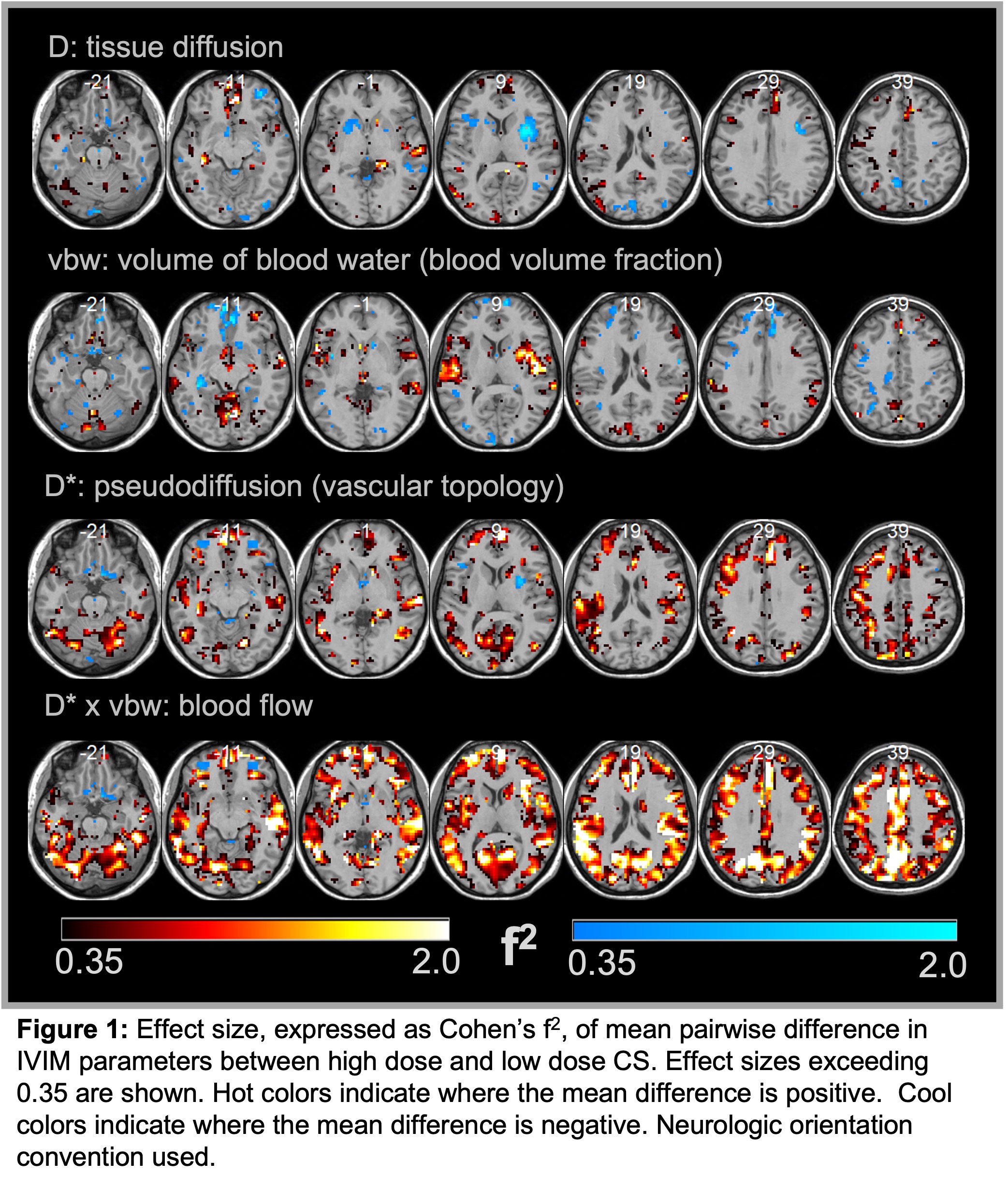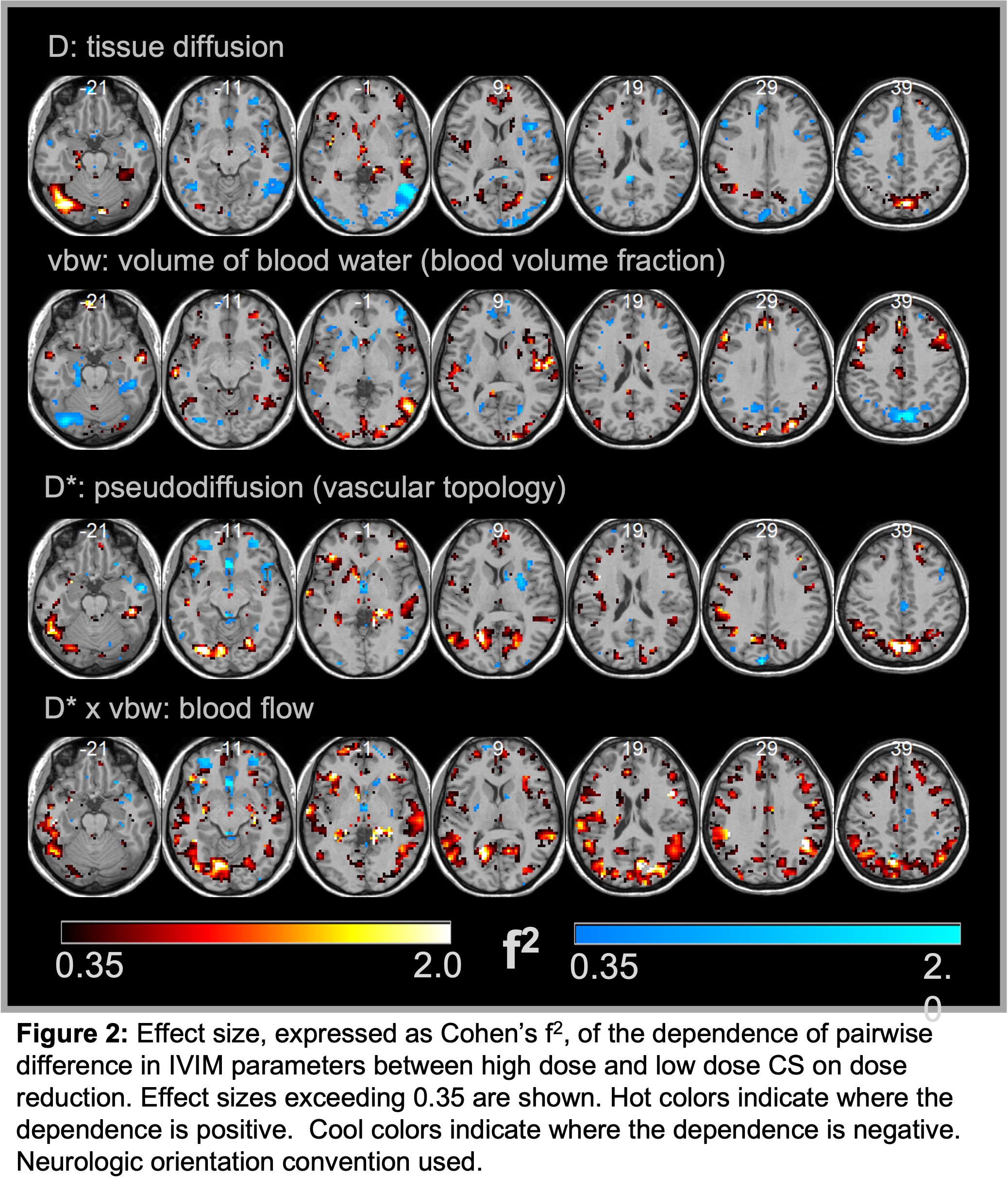Session Information
Session Type: Breakout Session
Session Time: 5:10PM-5:40PM
Background/Purpose: Prior research suggests that microvascular (MV) changes might be a biomarker for central nervous system (CNS) involvement of patients with systemic lupus erythematosus (SLE). Given that corticosteroids (CS) are widely used for the treatment of SLE and could also influence MV changes, CS effects need to be distinguished from MV changes secondary to CNS disease. We aimed to quantify and isolate the dose-dependent effects of oral CS on MV properties as assessed by diffusion-weighted imaging (DWI).
Methods: Using convenience sampling, 11 patients with chronic inflammatory conditions were enrolled and studied at two visits: (1) the time of high dose CS use (HD-CS; prednisone >20 mg/day) and (2) after tapering to low dose (LD-CS). At each study visit, cognitive ability was measured using the Pediatric Neuropsychological Assessment Metrics (PedANAM) and MRI was acquired at 3-Tesla, including T1 and T2 relaxometry, blood-brain-barrier permeability measurement by arterial spin labeling, and diffusion weighted imaging (DWI) at 19 weightings (b-values) ranging from 0 to 5000 s/mm2. DWI signal was analyzed as a biexponential function of b-value under the intravoxel incoherent motion (IVIM) model. Besides bulk tissue diffusion (D), the IVIM model provides parameters describing microvasculature including pseudodiffusion (D*), dependent on flow through randomly-oriented microvessels, the volume fraction of blood (vbw), and their product, D* x vbw, proportional to blood perfusion. Voxel-wise change in each IVIM parameter was calculated between the HD-CS and LD-CS visits for each patient. Parameter changes were fitted across patients to a linear model including 2 terms 1) the mean parameter change and 2) the degree of CS dose reduction between HD-CS and LD-CS. Model results were expressed as effect size, represented by Cohens f2, for the coefficients of the mean and dose reduction terms. with Cohens f2 > 0.35 considered a large effect size.
Results: All patients completed the HD-CS visit and 9 the LD-CS visit. Table 1 summarizes patient characteristics. Regionally, there were mean changes in the 4 IVIM parameters between HD-CS and LD-CS with f2 > 0.35, . (Figure 1). Similarly, the dependence of parameter changes between HD-CS and LD-CS on the amount of dose reduction also had large effect size regionally (f2 > 0.35) (Figure 2). Vascular parameters were mostly greater at HD-CS, with increases in the blood perfusion-related product, D* x vbw, especially widespread. There was mostly positive dependence of vascular parameters with degree of dose reduction.
Conclusion: This pilot study provides evidence of at least moderate impact of oral CS on CNS MV as measured by DWI results in SLE. Further, CS impact on brain MV varies regionally across the brain. If confirmed in a larger cohort, the parameter estimates from this study can be used to isolate the brain MV effects from the inflammation associated with CNS lupus from those caused by CS treatment.
To cite this abstract in AMA style:
DiFrancesco M, Ogbu E, Robben C, Huggins J, Brunner H. Effects of Corticosteroids on Central Nervous System Microvascular Properties Assessed by Neuroimaging [abstract]. Arthritis Rheumatol. 2023; 75 (suppl 4). https://acrabstracts.org/abstract/effects-of-corticosteroids-on-central-nervous-system-microvascular-properties-assessed-by-neuroimaging/. Accessed .« Back to 2023 Pediatric Rheumatology Symposium
ACR Meeting Abstracts - https://acrabstracts.org/abstract/effects-of-corticosteroids-on-central-nervous-system-microvascular-properties-assessed-by-neuroimaging/



